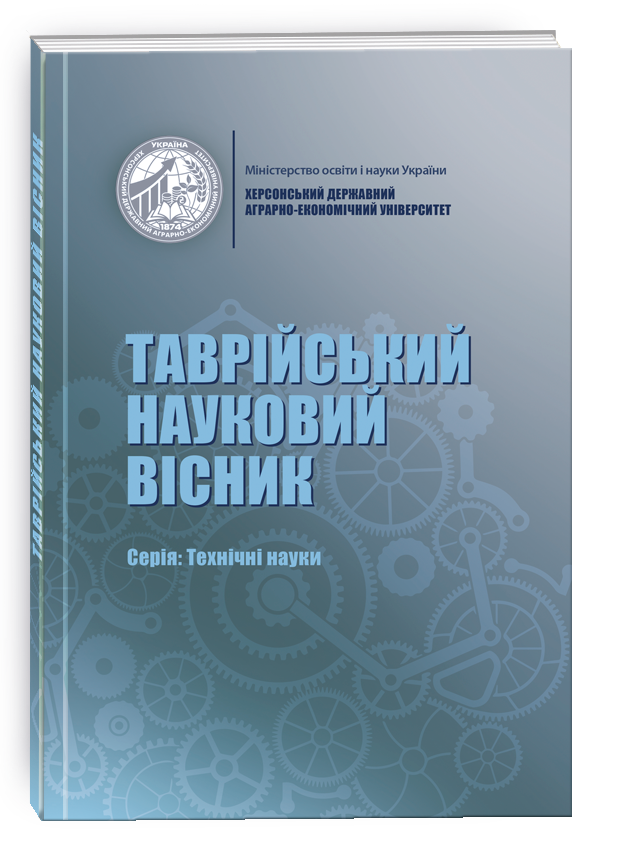ЕФЕКТИВНІСТЬ РОЗПІЗНАВАННЯ ТЕКСТУ В АВТОМАТИЗАЦІЇ МІЖНАРОДНИХ МОРСЬКИХ ПЕРЕВЕЗЕНЬ ЗА ДОПОМОГОЮ ШТУЧНОГО ІНТЕЛЕКТУ
DOI:
https://doi.org/10.32782/tnv-tech.2024.3.4Ключові слова:
розпізнавання тексту, OCR, штучний інтелект (AI), логістика, автоматизація, міжнародні перевезення, обробка документів, інтеграція системАнотація
Сучасні технології оптичного розпізнавання символів (OCR) на основі штучного інтелекту значно покращили можливості автоматизації обробки текстових документів. Вони забезпечують високу точність та універсальність, дозволяючи ефективно обробляти документи різних типів та мов. Вибір конкретної OCR-технології залежить від специфіки завдання та вимог до точності, швидкості й інтеграції з існуючими системами. У статті розглядається ефективність технологій оптичного розпізнавання символів на основі штучного інтелекту у контексті автоматизації міжнародних морських перевезень. Щораз більша складність і обсяг документів, які супроводжують логістичні процеси, вимагають впровадження інноваційних рішень для покращення результативності обробки даних та зниження операційних витрат. Метою дослідження є вивчення можливостей та переваг використання OCR на основі ШІ для підвищення ефективності обробки текстових даних у логістиці. Завдання дослідження включають аналіз сучасних технологій OCR, визначення принципів роботи OCR-систем, оцінку їхніх переваг та обмежень, а також надання рекомендацій щодо підвищення ефективності їх використання. Дослідження показало, що впровадження OCR-систем у логістичні процеси забезпечує високу точність розпізнавання тексту, значне скорочення часу обробки документів та зниження кількості помилок. Реальні приклади успішного використання OCR-технологій у провідних логістичних компаніях, таких як DHL, Maersk, Amazon, FedEx та UPS, підтверджують значні переваги автоматизації обробки транспортних накладних, митного оформлення, управління складами та рахунків-фактур. OCR-технології на основі ШІ мають великий потенціал для автоматизації та оптимізації логістичних процесів. Для досягнення максимальних результатів рекомендується покращувати якість вхідних зображень, використовувати сучасні алгоритми та моделі, адаптувати їх до конкретних завдань, забезпечувати безпеку та конфіденційність даних, інтегрувати OCR-системи з іншими інформаційними системами, регулярно моніторити та оптимізувати роботу систем, а також навчати персонал. Використання OCR у логістиці сприяє підвищенню ефективності, точності та швидкості обробки документів, що є ключовим для успішного функціонування міжнародних морських перевезень.
Посилання
Tang Q., Lee Y., Jung H. The Industrial Application of Artificial Intelligence-Based Optical Character Recognition in Modern Manufacturing Innovations. Sustainability. 2024. Vol. 16, no. 5. P. 2161. URL: https://doi.org/10.3390/su16052161 (date of access: 13.07.2024).
Haseeb M., Hussain H.I., Ślusarczyk B., Jermsittiparsert K. Industry 4.0: A Solution towards Technology Challenges of Sustainable Business Performance. Social Sciences. 2019. №8. Р. 154.
Woschank M., Rauch E., Zsifkovits H. A Review of Further Directions for Artificial Intelligence, Machine Learning, and Deep Learning in Smart Logistics. Sustainability. 2020. Vol. 12, no. 9. P. 3760. URL: https://doi.org/10.3390/su12093760 (date of access: 13.07.2024).
Mask TextSpotter: An End-to-End Trainable Neural Network for Spotting Text with Arbitrary Shapes / M. Liao et al. IEEE Transactions on Pattern Analysis and Machine Intelligence. 2019. Vol.43(2). Р. 532–548. URL: https://doi.org/10.1109/tpami.2019.2937086 (date of access: 13.07.2024).
Boundary TextSpotter: Toward Arbitrary-Shaped Scene Text Spotting / P. Lu et al. IEEE Transactions on Image Processing. 2022. P. 1. URL: https://doi.org/10.1109/tip.2022.3206615 (date of access: 14.07.2024).
Raj R., Kos A. A Comprehensive Study of Optical Character Recognition. 2022 29th International Conference on Mixed Design of Integrated Circuits and System (MIX-DES), Wrocław, Poland, 23–24 June 2022. P. 151–154. URL: https://doi.org/10.23919/mixdes55591.2022.9837974 (date of access: 14.07.2024).
Implementation of Optical Character Recognition using Tesseract with the Javanese Script Target in Android Application / G. A. Robby et al. Procedia Computer Science. 2019. Vol. 157. P. 499–505. URL: https://doi.org/10.1016/j.procs.2019.09.006 (date of access: 14.07.2024).
Adedayo K. D., Agunloye A. O. Real-time Automated Detection and Recognition of Nigerian License Plates via Deep Learning Single Shot Detection and Optical Character Recognition. Computer and Information Science. 2021. Vol. 14, no. 4. P. 11. URL: https://doi.org/10.5539/cis.v14n4p11 (date of access: 14.07.2024).
Шевченко А. І., Кондратенко Ю. П. Щодо проєкту стратегії розвитку штучного інтелекту в Україні. Artificial Intelligence. 2022. № 1. С. 75-80. URL: https://www.slyusar.kiev.ua/AI_2022-1-1_ua.pdf. (дата звернення: 14.07.2024).
Стратегія розвитку штучного інтелекту в Україні: монографія; за заг. ред. А. І. Шевченка. Київ: ІПШІ, 2023. 305 с.







